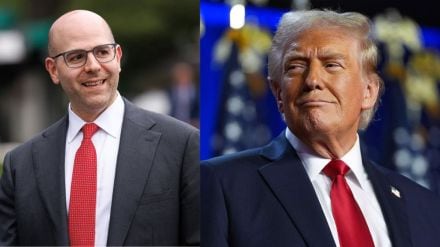One of the defining terms of the second Trump administration is Trump tariffs. Introduced to reduce the trade deficit, boost domestic manufacturing, strengthen border negotiations, and advance the “Make America Great Again” agenda, these tariffs have an architect behind the scenes, Stephen Miran, the current chairman of the Council of Economic Advisers.
Who is Stephen Miran?
Stephen Miran is an American economist and policy advisor, currently serving as Chair of the Council of Economic Advisers in the Trump administration and recently nominated to the Federal Reserve Board.
A summa cum laude graduate of Boston University in economics, philosophy, and math, he earned his PhD in economics from Harvard University in 2010 under Martin Feldstein.
Miran’s career spans the private sector as an analyst at Lily Pond Capital, portfolio manager at Sovarnum Capital, senior strategist at Hudson Bay Capital Management, and co-founder of Amberwave Partners and public service, including as senior advisor for economic policy at the US Treasury during the COVID-19 pandemic.
He has also been a senior fellow at the Manhattan Institute, publishing research on fiscal and monetary policy. Since becoming CEA Chair in March 2025, Miran has been a key architect of President Trump’s trade and tariff agenda, including the “Mar-a-Lago Accord.”
What is Stephen Miran’s contribution to Trump tariffs?
Miran has been one of the main defenders of the Trump’s ‘reciprocal tariffs.’ These measures, aimed at reshaping global trade, have rattled markets worldwide.
On April 7, as Trump threatened to impose an additional 50% import duty on Chinese goods, bringing the cumulative tariff to 104%, Miran declared, “Most economists and some investors dismiss tariffs as counterproductive at best and devastatingly harmful at worst. They are wrong.”
Miran has also authored a 41-page ‘User’s guide to restructuring the global trading system,’ in 2024.
The report argued that America’s record trade and current account deficits, $1.21 trillion and $1.13 trillion respectively in 2024, stem from the dollar’s persistent overvaluation as the world’s reserve currency.
He also added in the guide that unlike other nations, the US cannot rely on currency depreciation to balance trade, as global commerce, borrowing, and roughly 60% of official foreign reserves are denominated in dollars.
This ‘inelastic’ demand for the greenback keeps it overvalued, making US exports uncompetitive, imports cheaper, and hollowing out manufacturing.
He warns that America’s role in providing reserve assets and a military defense shield to liberal democracies is unsustainable without stronger domestic industrial capacity.
In his view, access to the US consumer market “is a privilege that must be earned, not a right.” While multilateral agreements carry less volatility, he argues they yield smaller gains due to the difficulty of securing consensus. By contrast, unilateral tariffs can pressure trading partners into offering better terms on trade and security
